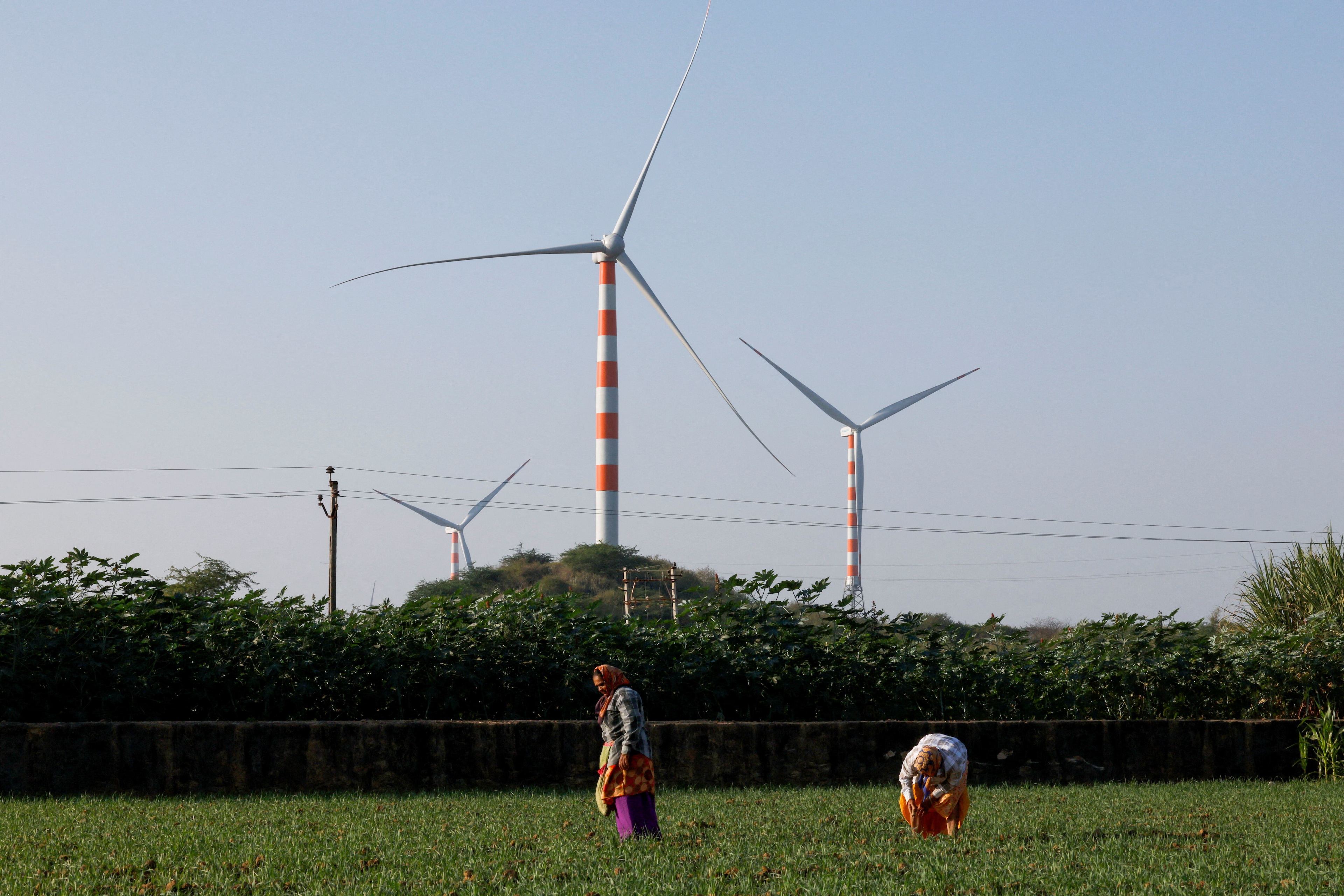6 ways Latin America can accelerate its hydrogen economy
Latin America has the potential to become a global leader in clean hydrogen.
Image: REUTERS/Raquel Cunha
- Latin America has the potential to become a global leader in clean hydrogen, and countries in the region are pursuing diverse hydrogen strategies.
- A new report from the World Economic Forum, in partnership with Accenture, finds that Latin America could meet 25-33% of the global clean hydrogen demand.
- A focus on six key areas could accelerate the region's hydrogen growth.
Latin America is uniquely positioned to become a global leader in clean hydrogen production and export, thanks to its abundant renewable energy resources including solar, wind and hydro.
A new report from the World Economic Forum, in partnership with Accenture, finds that Latin America could meet 25-33% of global hydrogen demand, rivalling major players like Australia.
Countries across the region are pursuing diverse strategies to develop their hydrogen economies, reflecting their strengths and priorities, according to ‘Accelerating the Clean Hydrogen Economy in Latin America’. These approaches can be broken down into three pathways:
Net exporters: Countries like Chile and Argentina aim to become globally competitive players, focusing on international markets and developing trade infrastructure and certification schemes.
Local decarbonizers: Nations such as Brazil, Colombia and Mexico prioritize using hydrogen to decarbonize their domestic economies, with exports as a longer-term goal.
Focused players: Countries like Panama and Uruguay are taking a targeted approach, developing hydrogen for specific applications such as shipping or particular industrial sectors.
Six ways to boost Latin America’s hydrogen production
To deliver on this potential, the region must overcome a number of challenges in developing its hydrogen sector. These include a current lack of demand, the slow pace of building infrastructure, and the development of a skilled workforce.
The Forum’s report outlines six key areas where targeted action could help to overcome these challenges and accelerate Latin America's hydrogen economy.
1: Standards and certification
Ensuring clarity on technical, safety and carbon intensity standards is crucial for developing Latin America’s hydrogen industry. The report recommends promoting regional agreements to standardize regulations across the continent.
Countries should define technical standards for the entire hydrogen value chain, from production to end-use. Creating industrial safety standards and workforce training systems is also important.
By aligning domestic standards with international ones, Latin American countries can boost the legitimacy of their hydrogen production and remove barriers for potential customers.
2: Cost reduction
To make clean hydrogen price-competitive with conventional alternatives, Latin America must reduce costs related to hydrogen conversion, storage and transport. The report suggests decreasing investment costs for renewables, electrolyzers and carbon capture through dedicated support mechanisms. Governments could unify multiple funding sources into a ‘one-stop shop’ to ease access.
Encouraging collaboration between nearby industries to share resources could also lower costs. As production scales up and becomes more efficient, Latin American hydrogen may become increasingly cost-competitive in global markets.
3: Technology and talent development
Focusing innovation and R&D efforts is key to enabling technology scale-up. The report recommends redirecting R&D investment from oil and gas to clean hydrogen and establishing dedicated research centres. Developing strategies to ensure a highly qualified workforce will be crucial as the industry grows.
Increased funding for hydrogen-related research and public-private partnerships could accelerate technological breakthroughs. This may allow Latin America to develop hydrogen technologies tailored to local conditions.
4: Demand creation
Different strategies are needed depending on a country's focus. For potential net exporters like Chile and Argentina, the priority is developing international demand through global collaboration and long-term offtake agreements.
Countries focused on domestic markets should drive local demand through industrial clusters and incentives for high-energy sectors.
5: Infrastructure development
Dedicated hydrogen infrastructure is essential, but needs vary by country. Net exporters should focus on export infrastructure like ports and shipping. Countries prioritizing domestic use need centralized infrastructure like hydrogen hubs. The report suggests incentivizing construction through funding and capacity payments.
6: Accelerating development pace
Coordinating ecosystem actors is vital to drive economies of scale. For exporters, this means automating production, providing innovative financing and promoting international knowledge exchange. Domestically-focused countries should orchestrate different actors across the value chain through industrial clusters.
What's the World Economic Forum doing about the transition to clean energy?
Building on existing advantages
The region's competitive advantage in the emerging hydrogen sector is clear. The current levelized cost of hydrogen in Latin America ranges from $3.70 to $5.90 per kg, already lower than the global average of $3.80 to $8.50 per kg, the report says.

By 2030, countries like Argentina and Chile aim to have production costs as low as $1.20 to $1.50 per kg, potentially making them the world's most cost-effective producers.
Latin America's path to becoming a clean hydrogen powerhouse is clear, but success will require coordinated action across multiple fronts.
The potential benefits extend far beyond the energy sector. A thriving hydrogen economy could drive economic growth, create high-skilled jobs and position Latin American countries as leaders in the global transition to sustainable energy.
Accept our marketing cookies to access this content.
These cookies are currently disabled in your browser.
Don't miss any update on this topic
Create a free account and access your personalized content collection with our latest publications and analyses.
License and Republishing
World Economic Forum articles may be republished in accordance with the Creative Commons Attribution-NonCommercial-NoDerivatives 4.0 International Public License, and in accordance with our Terms of Use.
The views expressed in this article are those of the author alone and not the World Economic Forum.
Forum Stories newsletter
Bringing you weekly curated insights and analysis on the global issues that matter.
More on Energy TransitionSee all
Valentin Chomel and Jacques-Alexis Verrecchia
August 14, 2025
Gaurav Upadhyay and Labanya Prakash Jena
August 8, 2025
David Timis
August 8, 2025
Forum Stories
August 6, 2025
Marina Colombo and Lynn Kappes
August 6, 2025
Sverre Alvik
August 5, 2025






